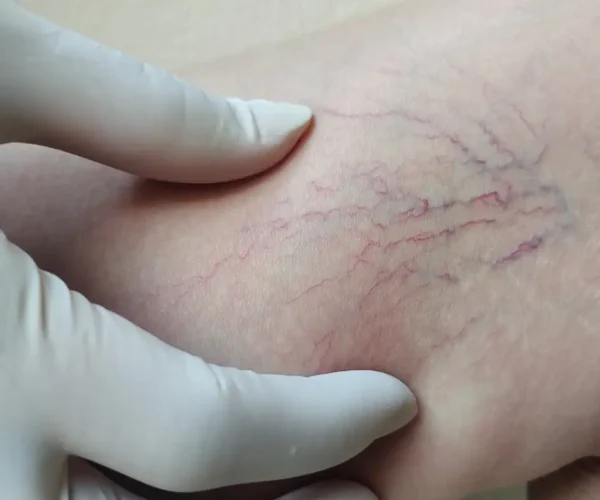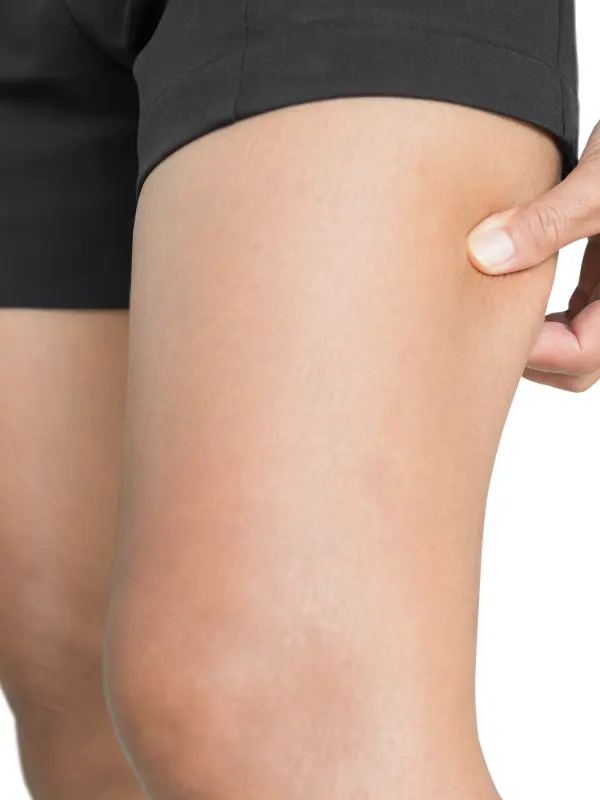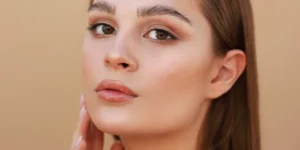Understanding the difference between spider veins and varicose veins helps you choose the right treatment and know when to seek medical care. This guide walks through causes, symptoms, comparisons, and modern vein treatment options — and shows how Parpar’s spider vein service in Airmont, NY can help. Throughout this article we will repeatedly address common patient questions like What is the difference between spider veins and varicose veins? and How are spider veins and varicose veins treated? to make sure you find clear answers.
Quick overview: What are spider veins and what are varicose veins?
Spider veins (also called telangiectasias or thread veins) are small, thin blood vessels visible on the surface of the skin. They commonly appear as fine red, blue, or purple lines in a web-like pattern and are most often a cosmetic concern. Varicose veins are larger, bulging superficial veins that may appear blue or dark purple and can become twisted or rope-like. Varicose veins are more likely to cause symptoms such as aching, heaviness, swelling, or skin changes, whereas spider veins are usually painless and purely cosmetic. :contentReference[oaicite:0]{index=0}
How these veins form: Causes of spider veins and varicose veins
Both spider veins and varicose veins are related to abnormal blood flow in superficial veins, but their causes and risk factors overlap while differing in degree:
Common contributing factors
Family history (genetics), aging, hormones (pregnancy, birth control), obesity, prolonged standing or sitting, and prior venous injury or blood clots raise the risk for both spider veins and varicose veins. The same triggers that increase pressure in leg veins can cause either type to appear. :contentReference[oaicite:1]{index=1}
Why spider veins form (Causes of spider veins)
Spider veins form when smaller surface veins dilate. They often result from localized increases in pressure or hormone-driven dilation of tiny vessels. While largely cosmetic, spider veins can be influenced by the same long-term pressures that produce varicose veins. The term Causes of spider veins commonly includes genetics, sun exposure (on the face), hormonal changes, injuries, and occupations that require long periods of standing. :contentReference[oaicite:2]{index=2}
Why varicose veins form (Varicose vein symptoms and physiology)
Varicose veins typically arise when valves inside deeper or larger superficial veins fail, allowing blood to pool and veins to dilate. This valve failure leads to the classic signs: bulging, ropey veins and symptoms such as aching, a heavy feeling, swelling, restless legs, and skin discoloration or ulcers in severe cases. The phrase Varicose vein symptoms refers to these physical signs and sensations that often prompt treatment. :contentReference[oaicite:3]{index=3}
Spider veins vs varicose veins: side-by-side comparison
| Feature | Spider veins | Varicose veins |
|---|---|---|
| Size | Small, <1–3 mm; fine red/blue lines | Larger, >3 mm; bulging, rope-like |
| Symptoms | Usually none (cosmetic) | Often aching, heaviness, swelling, skin changes |
| Health risk | Generally low (cosmetic) | Higher — risk of pain, ulcers, thrombosis in severe cases |
| Common treatments | Sclerotherapy, laser, IPL | Endovenous ablation, sclerotherapy, phlebectomy, sometimes surgery |
In plain language: Spider veins vs varicose veins is mostly a question of size and symptoms. Spider veins are the smaller, generally cosmetic counterpart to varicose veins, which are larger and more likely to cause functional symptoms and complications. :contentReference[oaicite:4]{index=4}
Are spider veins and varicose veins caused by the same factors?
Short answer: Yes — spider veins and varicose veins often share the same risk factors, but the degree and location of vein damage differ. Both can be influenced by genetics, age, hormones, pregnancy, obesity, and prolonged standing. However, varicose veins typically result from deeper or larger vein valve failure, while spider veins are small-diameter surface veins that dilate and form visible networks. Because the underlying venous pressure issues can be similar, someone with spider veins may also have or later develop varicose veins. :contentReference[oaicite:5]{index=5}
Can spider veins turn into varicose veins over time?
Directly turning one into the other is not a neat binary conversion, but clinically you should understand:
– Spider veins are small surface vessels and often stay cosmetic.
– If there is underlying venous insufficiency (valve problems) or progressive venous hypertension, larger varicose veins can develop over time.
So the practical answer to Can spider veins turn into varicose veins over time? is: they can be associated and coexist, and the same underlying venous issues may progress to varicose veins. Evaluation by a vein specialist can determine whether spider veins are a cosmetic isolated problem or a sign of deeper reflux that could lead to varicose veins. :contentReference[oaicite:6]{index=6}
How are spider veins and varicose veins treated?
Treatment choices depend on whether the goal is cosmetic improvement, symptom relief, or prevention of complications. Below is a summary of common vein treatment options and when they’re used.
Conservative measures (first-line)
Conservative approaches target symptoms and progression: compression stockings to lower venous pressure and swelling; leg elevation and regular exercise to improve circulation; weight management and avoiding long periods of immobility. These measures are recommended for both spider veins and varicose veins as initial management or adjuncts to procedural therapy. They do not eliminate established veins but can reduce symptoms and slow progression. :contentReference[oaicite:7]{index=7}
Sclerotherapy (for spider veins and small varicose veins)
Sclerotherapy is a minimally invasive procedure in which a sclerosant solution is injected into targeted veins, causing them to collapse, scar, and fade. It’s widely used for spider veins and for many small varicose tributaries. Sclerotherapy remains a cornerstone of vein treatment options for cosmetic and symptomatic relief. Multiple sessions are often needed for best results. :contentReference[oaicite:8]{index=8}
Endovenous thermal ablation (for larger varicose veins)
Endovenous laser ablation (EVLA) or radiofrequency ablation (RFA) are catheter-based treatments that close the dysfunctional saphenous veins (the most common source of varicose veins). These procedures are minimally invasive, performed under local anesthesia, and have largely replaced older surgical stripping for many patients. After closure, tributary veins may be treated with sclerotherapy or phlebectomy. Clinical guidelines and vascular societies list ablation among first-line procedural options for symptomatic varicose veins. :contentReference[oaicite:9]{index=9}
Ambulatory phlebectomy and microphlebectomy
For bulging surface varicose veins, phlebectomy (removing veins through tiny incisions) gives immediate cosmetic improvement and symptom relief. It’s often done after or alongside ablation if needed. This is one of the effective vein treatment options for persistent superficial varicosities. :contentReference[oaicite:10]{index=10}
Laser and intense pulsed light (IPL) therapy
For very small spider veins, especially on the face, surface laser or IPL can be effective. These light-based treatments target vessel hemoglobin to heat and close the tiny vessels. They are sometimes chosen when sclerotherapy is less practical (e.g., facial veins). IPL and laser are part of modern cosmetic vein treatment options, but multiple sessions may be required and results vary by skin type and vein size. :contentReference[oaicite:11]{index=11}
When is surgery considered?
Large, severe varicose veins with complications (skin changes, ulcers, recurrent thrombophlebitis) may require more extensive intervention. Traditional vein stripping is rare now but still used in select cases. Today, most patients are treated with less invasive ablation plus phlebectomy and sclerotherapy as needed. Guidance from vascular societies supports minimally invasive approaches as first-line for most symptomatic varicose veins. :contentReference[oaicite:12]{index=12}
How to choose a treatment: decision steps
- Clinical evaluation and history to identify symptoms and risk factors.
- Physical exam and duplex ultrasound to map reflux and determine if deeper veins are involved.
- If reflux exists in a saphenous vein, treat the offending vein (ablation) first; then address residual surface veins with sclerotherapy or phlebectomy.
- If spider veins are isolated without deeper reflux, direct cosmetic treatments like sclerotherapy or laser are reasonable options.
Before any procedure, a vein specialist will explain benefits, risks, and likely outcomes so you can choose the best option for your goals. This stepwise approach reflects the modern evidence-based algorithm for managing varicose and spider veins. :contentReference[oaicite:13]{index=13}
FAQ — short answers to common patient questions
What is the difference between spider veins and varicose veins?
Spider veins are small surface webs of dilated vessels; varicose veins are larger, bulging veins that may cause symptoms. In one line: spider veins = mostly cosmetic; varicose veins = potentially symptomatic and sometimes risky. (Question repeated for clarity: What is the difference between spider veins and varicose veins?). :contentReference[oaicite:14]{index=14}
Are spider veins and varicose veins caused by the same factors?
Yes — genetics, aging, hormones, obesity, and prolonged standing may cause both. However, varicose veins usually imply valve failure in larger veins while spider veins are surface-diameter changes. (Again: Are spider veins and varicose veins caused by the same factors?). :contentReference[oaicite:15]{index=15}
How are spider veins and varicose veins treated?
Treatments range from compression and lifestyle changes to sclerotherapy, endovenous ablation (RFA/EVLA), phlebectomy, and lasers. The goal is either cosmetic improvement or symptom relief and prevention of complications. (Short answer to the repeated question: How are spider veins and varicose veins treated?). :contentReference[oaicite:16]{index=16}
Can spider veins turn into varicose veins over time?
They don’t literally “turn into” varicose veins, but the same underlying venous problems that cause spider veins can progress and lead to varicose veins if left unmanaged. If you’re wondering Can spider veins turn into varicose veins over time?, the practical advice is: get an ultrasound evaluation if you have many spider veins or any leg symptoms. :contentReference[oaicite:17]{index=17}
Spotlight: What to expect from each major treatment
Sclerotherapy — what it feels like and recovery
Sclerotherapy is an in-office procedure where a solution is injected into target veins. Discomfort is usually mild; compression stockings are commonly used afterward for several days. Multiple sessions spaced weeks apart are normal. This is a leading option for spider veins and small varicose tributaries. :contentReference[oaicite:18]{index=18}
Endovenous ablation — procedure and recovery
Endovenous ablation (laser or radiofrequency) uses a catheter to heat and close a diseased saphenous vein. It is done under local anesthesia, often with immediate return to activity and compression for a period afterward. Pain and downtime are usually minimal compared with classic surgery. :contentReference[oaicite:19]{index=19}
Laser/IPL — best for small surface veins
Surface lasers and IPL are helpful for small facial veins or tiny leg spider veins. Expect several short sessions with transient redness; results may be slower and less complete than sclerotherapy for leg spider veins. :contentReference[oaicite:20]{index=20}
Real-world outcomes and follow-up
Most patients experience significant cosmetic and/or symptomatic improvement with the appropriate combination of therapies. It’s common to require multiple sessions or a combination of ablation for larger refluxing veins followed by sclerotherapy or phlebectomy for residual surface veins. Long-term follow-up may be needed as new veins can appear over years, especially if risk factors persist. Evidence-based guidelines from vascular societies guide many modern practices in a way that prioritizes minimally invasive approaches. :contentReference[oaicite:21]{index=21}
When to see a specialist
See a vein specialist if you have any of the following: significant pain or heaviness in the legs, swelling that doesn’t improve with rest, skin discoloration, ulcers, bleeding from a vein, or concern about appearance that affects your quality of life. If you’re asking yourself Can spider veins turn into varicose veins over time? and you also have symptoms, it’s time for an ultrasound evaluation. Early evaluation helps guide whether conservative measures are sufficient or if procedural treatment is recommended. :contentReference[oaicite:22]{index=22}
Why choose Parpar for spider vein treatment in Airmont, NY?
At Parpar, we offer targeted spider vein treatments that follow best practices: thorough evaluation, duplex ultrasound when indicated, and evidence-based treatment selection — from sclerotherapy for spider veins to combined approaches when needed. If your main concern is cosmetic improvement, Parpar’s spider vein service in Airmont provides personalized treatment plans, multiple modalities (sclerotherapy, laser/IPL), and follow-up care to optimize outcomes. Learn more about our service and book a consultation here: Parpar – Spider Veins Treatment (Airmont, NY).
FAQ recap — repeated answers for clarity
What is the difference between spider veins and varicose veins? Spider veins are smaller and largely cosmetic; varicose veins are larger, bulging, and more likely to cause symptoms. (Repeated question: What is the difference between spider veins and varicose veins?) :contentReference[oaicite:23]{index=23}
Are spider veins and varicose veins caused by the same factors? Yes — genetics, hormones, age, and prolonged standing can cause both. (Repeated question: Are spider veins and varicose veins caused by the same factors?) :contentReference[oaicite:24]{index=24}
How are spider veins and varicose veins treated? With compression and lifestyle changes for mild cases; sclerotherapy, laser/IPL, endovenous ablation, and phlebectomy for procedural care. (Repeated question: How are spider veins and varicose veins treated?) :contentReference[oaicite:25]{index=25}
Can spider veins turn into varicose veins over time? They can coexist and may signal underlying venous problems that could progress; ultrasound evaluation clarifies risk. (Repeated question: Can spider veins turn into varicose veins over time?) :contentReference[oaicite:26]{index=26}
External sources and further reading
For detailed, authoritative information we recommend the following resources:
- Mayo Clinic — Varicose veins (overview and spider veins). :contentReference[oaicite:27]{index=27}
- NHS — Varicose veins patient information and management. :contentReference[oaicite:28]{index=28}
- Society for Vascular Surgery / Journal of Vascular Surgery: clinical practice guidance on varicose vein management. :contentReference[oaicite:29]{index=29}
Call to action — schedule a consultation
If you’re worried about appearance or symptoms, take the next step: book a consultation with Parpar in Airmont, NY. Our team will evaluate whether your spider veins are isolated or part of a deeper venous issue and recommend a personalized treatment plan using modern vein treatment options.
Closing notes
Spider veins vs varicose veins: though related, they differ in size, symptoms, and potential complications. Many effective vein treatment options exist today, from sclerotherapy and surface lasers to minimally invasive endovenous ablation for larger refluxing veins. If you have repeated questions like What is the difference between spider veins and varicose veins? or Can spider veins turn into varicose veins over time?, a clinical evaluation and duplex ultrasound are the best next steps. For cosmetic or symptomatic care in Airmont, consider Parpar’s spider vein service: Parpar – Spider Veins Treatment. Learn more or book your visit today.


